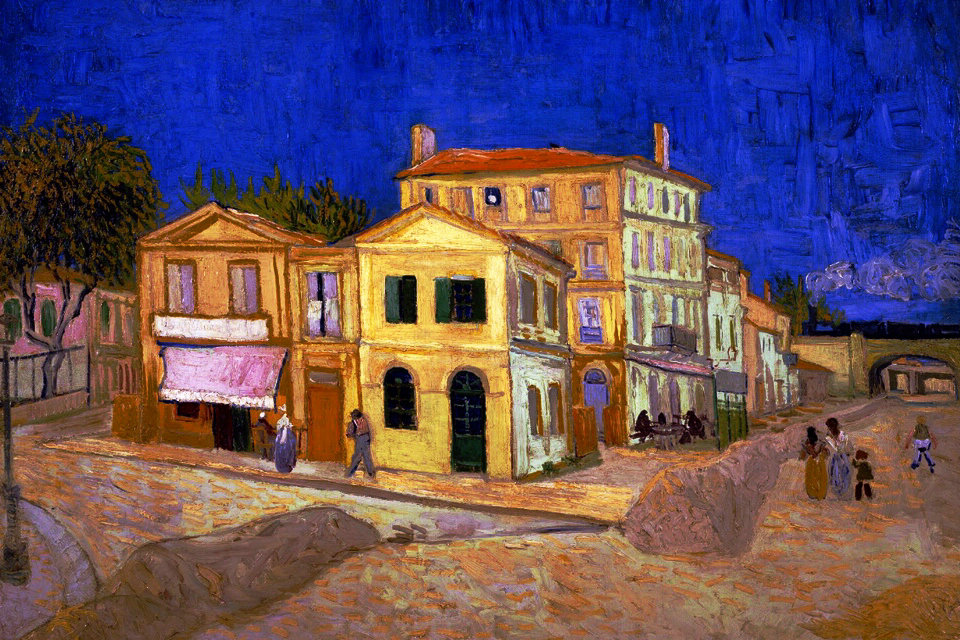Van Gogh and the yellow house, friendship and influence, Van Gogh Museum


It is widely believed that Vincent van Gogh found it hard to stay friends with people, not completely. As an artist Vincent was in the centre of things. He had countless dealings with his fellow painters. He even worked with some of them, with varying degrees of success. Even in his darkest days he had friends who rallied to support him.
In Paris Vincent met young painters from the artistic vanguard in the studio of the respected artist Fernand Cormon at Boulevard de Clichy. It was customary for an aspiring painter to become a pupil of a successful artist. In the end, though, Vincent learned most from the artists he met and became friends with.
Like anyone else, Vincent needed friends to feel he was being supported. With some he would discuss important issues in life, while with others he would go out for a couple of drinks.
The bonds he maintained with his artistic friends were always intense. Vincent was something of a father figure to the young Émile Bernard. The worldly wise Paul Gauguin, on the other hand, was someone to look up to. Vincent believed he could learn a lot from him.
After two years, the hectic Parisian lifestyle began to get on Vincent’s nerves, and he left for Arles in the South of France at the beginning of 1888. Now, though, he missed the contacts with his artistic friends. They continued their passionate debates about art in letters.
Vincent wanted to set up an artists’ studio in Arles with his friends. Meanwhile he came up with the idea of exchanging work with them. He asked Gauguin and Bernard to paint each other, but they chose to make self-portraits.
In May 1888, Van Gogh rented four rooms in a house on Place Lamartine in Arles (southern France). The green shutters in this painting of the square show where he lived. Shortly after moving into the ‘Yellow House’, he sent Theo a description and sketch of his painting of it: ‘it’s tremendous, these yellow houses in the sunlight and then the incomparable freshness of the blue.’
Vincent had finally found a place at the Yellow House where he could not only paint but also have his friends come to stay. His plan was to turn the yellow corner-building into an artists’ house, where like-minded painters could live and work together.
Although each of these friends considered coming to Arles, in the end only Gauguin went – and then only when Vincent’s brother Theo promised to pay him some money. Gauguin got things properly organized straightaway. He cooked for the two of them and kept track of household expenditure.
‘So Gauguin’s coming; that will make a big change in your life. I hope that your efforts will succeed in making your house a place where artists will feel at home.’
The sunflowers were painted to decorate the walls in anticipation of Gauguin’s visit, and Van Gogh placed individual works around the Yellow House’s guest room in Arles. Gauguin was deeply impressed and later acquired two of the Paris versions.
The optimism about cooperation took shape in a twenty-metre roll of coarse jute that Gauguin bought shortly after he arrived. He and Vincent cut their canvases from it.
The collaboration developed into an artistic battle. Vincent and Gauguin differed about almost everything. Exchanges of views soon became heated.
Van Gogh Museum
The Van Gogh Museum has the largest Van Gogh collection in the world It comprises 200 paintings, 400 drawings, and 700 letters by Vincent van Gogh.The Van Gogh Museum is a museum dedicated to the Dutch painter Vincent van Gogh, on the Paulus Potterstraat and the Museumplein in Amsterdam, in the Zuid district. The collection of the museum contains more than two hundred paintings, five hundred drawings and seven hundred letters from Vincent van Gogh, as well as his collection of Japanese prints, and the library comprises more than 23,000 works.
The museum is situated at the Museumplein in Amsterdam-Zuid, on the Paulus Potterstraat 7, between the Stedelijk Museum and the Rijksmuseum The museum consists of two buildings, the Rietveld building, designed by Gerrit Rietveld, and the Kurokawa wing, designed by Kisho Kurokawa The museum offices are housed on Stadhouderskade 55 in Amsterdam-Zuid.
The Rietveld building is the main structure of the museum and exhibits the permanent collection The building has a rectangular floor plan and is four stories high On the ground floor are a shop, a café, and the introductory part of the art exhibition The first floor shows the works of Van Gogh grouped chronologically The second floor gives information about the restoration of paintings and has a space for minor temporary exhibitions The third floor shows paintings of Van Gogh’s contemporaries in relationship to the work of Van Gogh himself.